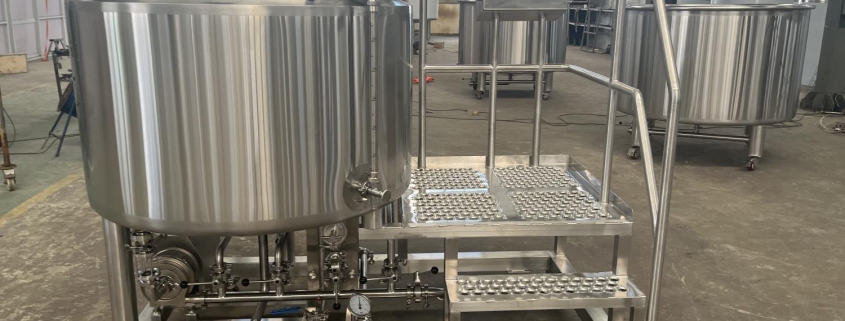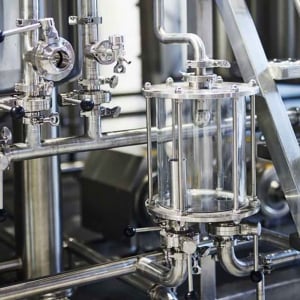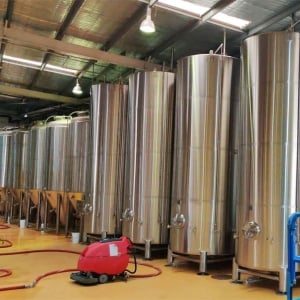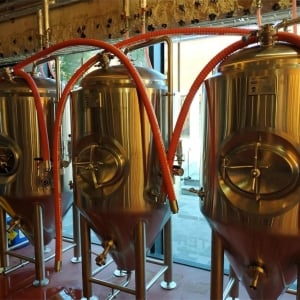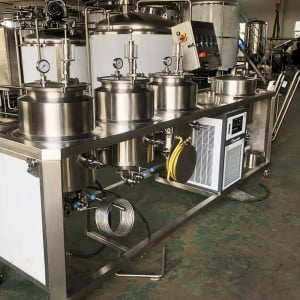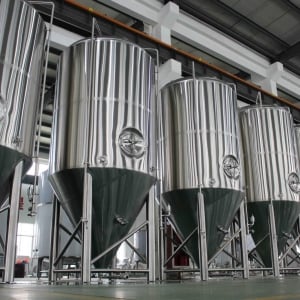Commercial Brewery Equipment
Brewing beer has come a long way since its humble beginnings, evolving into a thriving commercial industry with advanced equipment designed for efficiency, consistency, and scale. If you’re considering starting a brewery or upgrading your existing setup, understanding commercial brewery equipment is essential. With so many options on the market, knowing what to look for can seem overwhelming. This guide aims to break down everything you need to know about commercial brewery equipment in detail—from the brewing process, types of equipment, and capacity to suppliers, pricing, and maintenance.
Overview of Commercial Brewery Equipment
Commercial brewing requires specialized equipment to manage the various stages of brewing, from mashing to fermenting, conditioning, and packaging. The core brewing process involves multiple steps that need precise control to ensure consistency, efficiency, and quality.
Modern commercial brewery equipment offers features like automation, temperature control, and customization, allowing breweries to scale their operations and experiment with different recipes. The market for brewing equipment is vast, with varying price ranges, capacities, and supplier options tailored to different brewery sizes, from microbreweries to large-scale production facilities.
Key Elements in Commercial Brewery Equipment
To set the stage, let’s briefly summarize the key elements of brewery equipment:
- Mash Tuns & Lauter Tuns: Vessels where the grain is mashed and sugars are extracted.
- Boil Kettles & Wort Chillers: Where the wort is boiled and cooled before fermentation.
- Fermenters: Tanks where yeast ferments the sugars into alcohol.
- Brite Tanks: Vessels for conditioning the beer after fermentation.
- Packaging Equipment: Machinery for bottling, canning, or kegging the finished beer.
- Automation Systems: Equipment to control temperature, timing, and other variables.
Each piece of equipment is crucial in maintaining the quality and consistency of the beer you produce. Now, let’s dive deeper into the equipment guide.
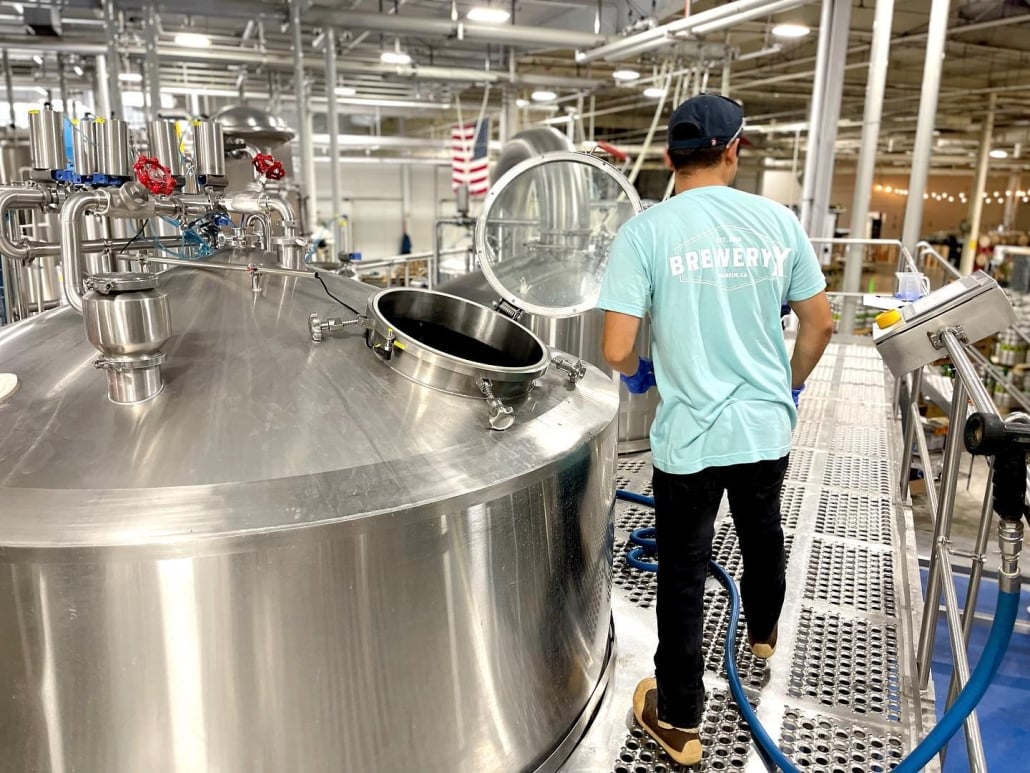
Commercial Brewery Equipment Guide
In this section, we’ll explore the essential equipment required for a commercial brewery setup. We’ll also go into detail about their specific functions and the variety of options available.
Mash Tuns and Lauter Tuns
Mash tuns and lauter tuns are integral parts of the brewing process, responsible for converting the starches in grains into fermentable sugars. The mash tun heats the grain and water mixture to extract the sugars, while the lauter tun separates the liquid wort from the grain husks.
- Mash Tuns: Usually made of stainless steel, these vessels can be manually or automatically operated. Some come with built-in heating elements for temperature control, which is vital for maintaining the enzymatic activity required for starch conversion.
- Lauter Tuns: These tuns are designed with a slotted bottom, allowing wort to flow through while leaving the grain husks behind. Lauter tuns may have mechanical rakes to aid in the sparging process, where water is sprinkled over the grain bed to extract more sugars.
Boil Kettles and Wort Chillers
Once the wort is extracted, it’s transferred to the boil kettle, where it’s boiled, and hops are added. After boiling, the wort must be cooled rapidly to a temperature suitable for fermentation, which is where wort chillers come into play.
- Boil Kettles: Commercial kettles are typically jacketed, allowing steam or hot water to flow through and heat the wort. Some systems are equipped with agitators to keep the wort moving and avoid scorching.
- Wort Chillers: Plate or counterflow chillers rapidly cool the wort by running cold water through a series of plates or coils. This process is crucial to ensure the wort reaches the ideal temperature for yeast fermentation.
Fermentation Tanks
Fermentation tanks are where the magic happens—where yeast turns the wort into beer. These tanks must be tightly controlled for temperature and pressure to create the right environment for yeast activity.
- Fermenters: Available in a variety of sizes, fermenters are usually made from stainless steel and can be cylindrical or conical in shape. Conical fermenters are preferred for easy yeast collection and beer clarification.
- Cooling Jackets: Fermentation vessels often have built-in cooling jackets to regulate temperature during fermentation, ensuring yeast stays within the desired range for flavor and alcohol production.
Brite Tanks
After fermentation, beer is transferred to brite tanks for conditioning. Brite tanks allow carbonation and flavor stabilization, resulting in a beer that’s ready for packaging.
- Brite Tanks: These tanks are similar in design to fermenters but are dedicated to conditioning and carbonation. Some systems also allow beer to be served directly from the brite tank, reducing the need for additional packaging equipment.
Packaging Systems
Packaging is the final step in the brewing process. Whether you plan to can, bottle, or keg your beer, having the right packaging equipment is essential for maintaining product quality and efficiency.
- Bottling and Canning Lines: Commercial bottling and canning lines automate the process of filling, capping, and sealing. Many modern systems include automated cleaning and sterilization steps.
- Kegging Systems: Kegging systems allow breweries to fill kegs quickly and efficiently, often integrating cleaning systems to ensure sanitary conditions.
Automation and Control Systems
Automation systems in brewing equipment streamline the process, allowing for consistent results and easier scaling.
- Process Controllers: These systems automate temperature, pressure, and time management, minimizing the risk of human error.
- Data Logging: Some systems allow for data collection, which can be used to optimize brewing processes over time.
Commercial Brewery Equipment Types
To make an informed decision, it’s important to understand the types of brewery equipment and what they’re used for. Here’s a detailed table breaking down the different types of equipment needed for each step of the brewing process.
| Equipment Type | Function | Key Features | Usage |
|---|---|---|---|
| Mash Tun | Mashing grains | Temperature control, insulated vessel | Extract sugars from grains |
| Lauter Tun | Wort extraction | Slotted bottom, mechanical rakes | Separate wort from grain husks |
| Boil Kettle | Boiling wort | Jacketed heating, agitators | Boil wort, add hops |
| Wort Chiller | Cool wort | Plate or counterflow design | Rapidly cool wort for fermentation |
| Fermentation Tank | Ferment wort | Cooling jackets, conical design | Convert wort to beer using yeast |
| Brite Tank | Condition beer | Carbonation, serving-ready | Condition and stabilize flavor |
| Packaging System | Bottle/can/keg beer | Automated filling and sealing | Efficient packaging for distribution |
Brewing Process Explained
The brewing process is both an art and a science, consisting of several precise stages. Here’s an overview of each step in the commercial brewing process.
1. Milling the Grain
Milling is the first step, where the grains are crushed to expose the starches inside. The goal is to crack the grains without completely pulverizing them.
2. Mashing
Mashing is the process of mixing the crushed grain with hot water in the mash tun. The heat activates enzymes in the malt, converting the starches into fermentable sugars. Temperature control is critical during this phase as it influences the type and amount of sugars produced, affecting the final beer flavor and body.
3. Lautering
Once mashing is complete, the mixture is transferred to the lauter tun. This vessel separates the wort from the grain husks. The leftover grain, known as spent grain, can be repurposed for animal feed or other uses.
4. Boiling
The clear wort is boiled in the kettle for a set amount of time (usually 60–90 minutes). During this phase, hops are added at different stages for bitterness, flavor, and aroma. Boiling also sterilizes the wort, preparing it for fermentation.
5. Cooling
After boiling, the wort needs to be cooled quickly to a temperature suitable for yeast fermentation. This is done using a wort chiller, typically a plate or counterflow system.
6. Fermentation
The cooled wort is transferred to a fermentation tank, where yeast is added. Yeast consumes the sugars in the wort, producing alcohol and carbon dioxide in the process. Fermentation times vary depending on the beer style and yeast strain but generally last 7–14 days.
7. Conditioning
After fermentation, the beer is transferred to a brite tank for conditioning. Here, it’s carbonated and allowed to mature. This process can take anywhere from a few days to several weeks.
8. Packaging
The final step is packaging, where the beer is bottled, canned, or kegged for distribution. Packaging systems can be highly automated, improving efficiency and consistency.
Brewery Equipment Customization, Capacity, and Layout
The size and design of your brewery setup depend on various factors, such as your production goals, available space, and budget. Below is a table outlining key considerations for customization, capacity, and layout.
| Parameter | Description | Considerations | Notes |
|---|---|---|---|
| Capacity | Amount of beer produced | Measured in barrels (BBL) | Larger systems require more space |
| Space | Physical layout | Square footage, workflow | Ensure adequate space for staff |
| Design | Layout and aesthetics | Workflow efficiency, visual appeal | Customizable based on brewery theme |
| Customization | Tailored features | Automation, control systems | Customization can increase costs |
| Expansion | Future growth | Scalable systems for higher production | Plan ahead for potential upgrades |
Suppliers and Pricing of Commercial Brewery Equipment
Finding the right supplier is crucial when setting up your brewery. Costs can vary widely depending on the equipment size, features, and supplier reputation. Here’s a general guide to commercial brewery equipment pricing from various suppliers.
| Supplier | Price Range | Equipment Offered | Reputation | Notes |
|---|---|---|---|---|
| ABC Brewing | $50,000–$200,000 | Full brewing systems | High quality, customizable | Known for durable equipment |
| BrewTech | $80,000–$300,000 | Fermentation tanks, kettles | Excellent customer service | Offers financing options |
| ProBrew | $100,000–$400,000 | Automated systems | Premium brand, high-end systems | Best for large-scale breweries |
| CraftMaster | $60,000–$250,000 | Modular systems | Affordable, reliable | Best for smaller breweries |
Installation, Operation, and Maintenance of Brewery Equipment
Operating a commercial brewery involves more than just brewing beer. Equipment installation, operation, and maintenance play a significant role in keeping your brewery running smoothly. Here’s a breakdown of the key tasks.
| Category | Task | Description | Frequency |
|---|---|---|---|
| Installation | Setup and calibration | Ensure proper connection of pipes, wiring | Once, during setup |
| Operation | Monitoring and adjustments | Regularly check temperature, pressure, etc. | Daily |
| Maintenance | Cleaning and repairs | Clean tanks, service mechanical parts | Weekly to monthly |
| Upgrades | Software and hardware updates | Add new features or improve system performance | As needed |
Choosing the Right Brewery Equipment Supplier
Selecting the right supplier is essential for ensuring you receive high-quality equipment and ongoing support. Here are some criteria to consider when evaluating suppliers.
| Criteria | Details | Importance | Why It Matters |
|---|---|---|---|
| Quality | Durability and build | High | Ensures long-lasting equipment |
| Price | Total cost, including installation | Medium | Balancing cost with quality is key |
| Customer Support | Post-sale service and maintenance | High | Crucial for solving problems quickly |
| Customization | Ability to tailor equipment | Medium | Allows you to get exactly what you need |
| Reputation | Reviews, testimonials | High | A well-regarded supplier offers peace of mind |
Advantages and Disadvantages of Commercial Brewery Equipment
No equipment setup is perfect for every brewery. Here’s a comparison of the advantages and disadvantages of common commercial brewery equipment features.
| Feature | Advantages | Disadvantages |
|---|---|---|
| Automation | Reduces manual labor, increases consistency | Higher upfront cost |
| Stainless Steel Tanks | Durable, easy to clean | Can be more expensive than other materials |
| Custom Systems | Tailored to specific needs | Longer lead time, higher costs |
| Modular Equipment | Expandable as the brewery grows | May require more space for additional units |

How to Operate Commercial Brewery Equipment Efficiently
Operating brewery equipment efficiently requires a mix of skill, knowledge, and attention to detail. Here are some tips for optimizing your brewery’s operations:
- Training Staff: Make sure your team is well-trained in operating the machinery. Automated systems can help reduce human error, but staff still need to monitor and manage the brewing process.
- Regular Maintenance: Keep your equipment in top shape with routine maintenance. Clean and service tanks, piping, and mechanical parts to avoid breakdowns.
- Energy Efficiency: Energy-efficient equipment can reduce operational costs. Look for systems with built-in energy-saving features like heat exchangers and insulated tanks.
- Batch Management: Keep a close eye on your batch records, monitoring fermentation times, temperatures, and other key variables to ensure consistency.
- Waste Management: Manage spent grains and wastewater responsibly to comply with environmental regulations and potentially reduce costs.
FAQ
Here’s a FAQ section to help clarify some of the common queries around commercial brewery equipment.
| Question | Answer |
|---|---|
| What size brewing system should I start with? | It depends on your production goals. A 5 to 10 BBL system is common for small breweries, while larger operations might start with 30+ BBL. |
| How much does commercial brewery equipment cost? | Equipment prices vary based on capacity and features, ranging from $50,000 to $400,000 or more. |
| Can I expand my brewing system later? | Yes, modular systems allow for easy expansion as your brewery grows. |
| How long does it take to set up a brewery? | Installation time varies, but typically takes 3 to 6 months from ordering equipment to starting production. |
| Do I need to hire a professional for equipment maintenance? | While some tasks can be handled in-house, major repairs or calibration should be done by professionals. |
Conclusion
Setting up or expanding a commercial brewery requires a significant investment in equipment, but choosing the right machinery can make all the difference in the quality, consistency, and efficiency of your beer. From understanding the brewing process to evaluating different suppliers and selecting the right equipment, this guide provides a comprehensive look at everything you need to know about commercial brewery equipment.
Remember, the key to a successful brewery is balancing your production needs with your budget, ensuring your equipment can scale with your business while maintaining the quality of your brews.

